In 2006, then-CTT Associate Editor Bob Keller wrote that the doodlebug held “an interesting place in railroad history.” These self-propelled railcars were developed in the early part of the 20th century and initially powered with gasoline engines (some later were converted to diesel).
These railcars were popular with railroads looking to economize service on lightly used branch lines. Doodlebugs could carry passengers or freight (often baggage or mail). The origin story of the name seems to have a couple of backstories. It’s either derived from the slow way the engines would “doodle” down the tracks, or it’s so named because often railroads would repurpose or piece something together to make one.
Model features
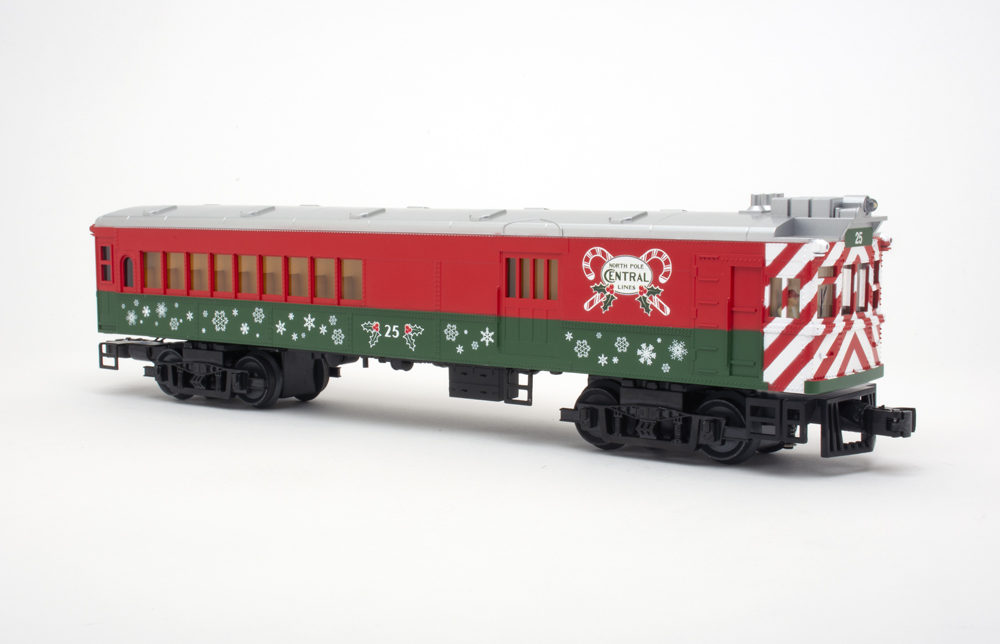
Lionel’s model of the doodlebug features all-new tooling. It’s available in six road names, including the fantasy No. 25 North Pole Central scheme shown here. If Halloween is more your style, there’s a Hallow’s Eve version available too.
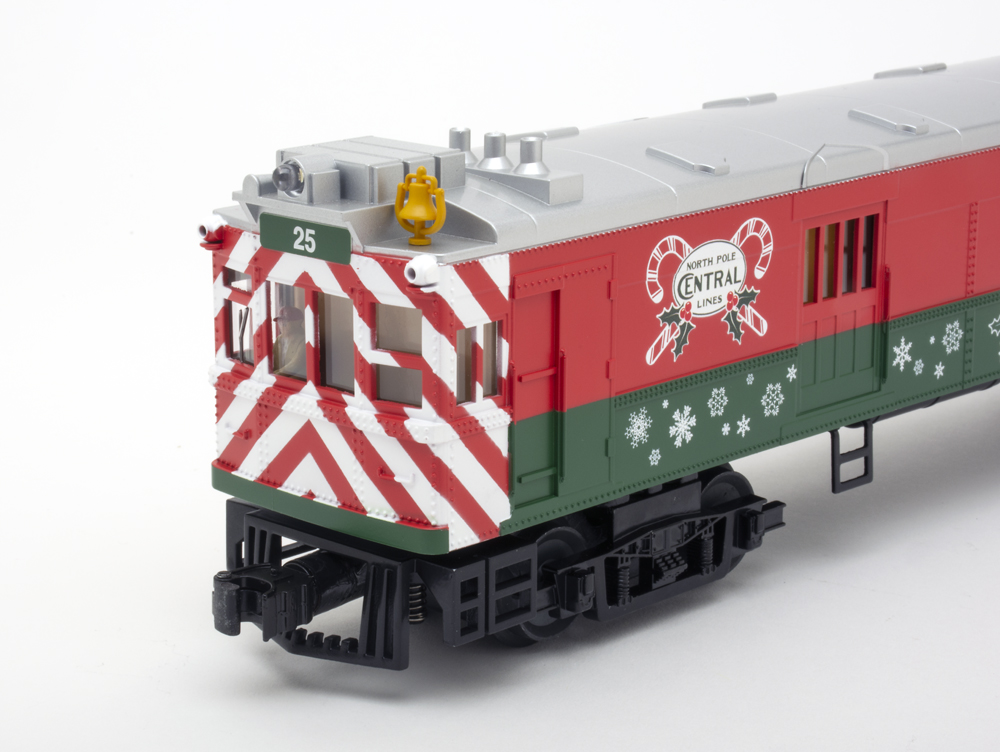
The model measures 15¼” inches long, excluding the couplers, which scales out to 61 feet. Doodlebug railcars came in many shapes and lengths, so it was nearly impossible to discern the prototype for this model. It may be partially based on Union Pacific’s M-32, built by McKeen, which was 72 feet long.
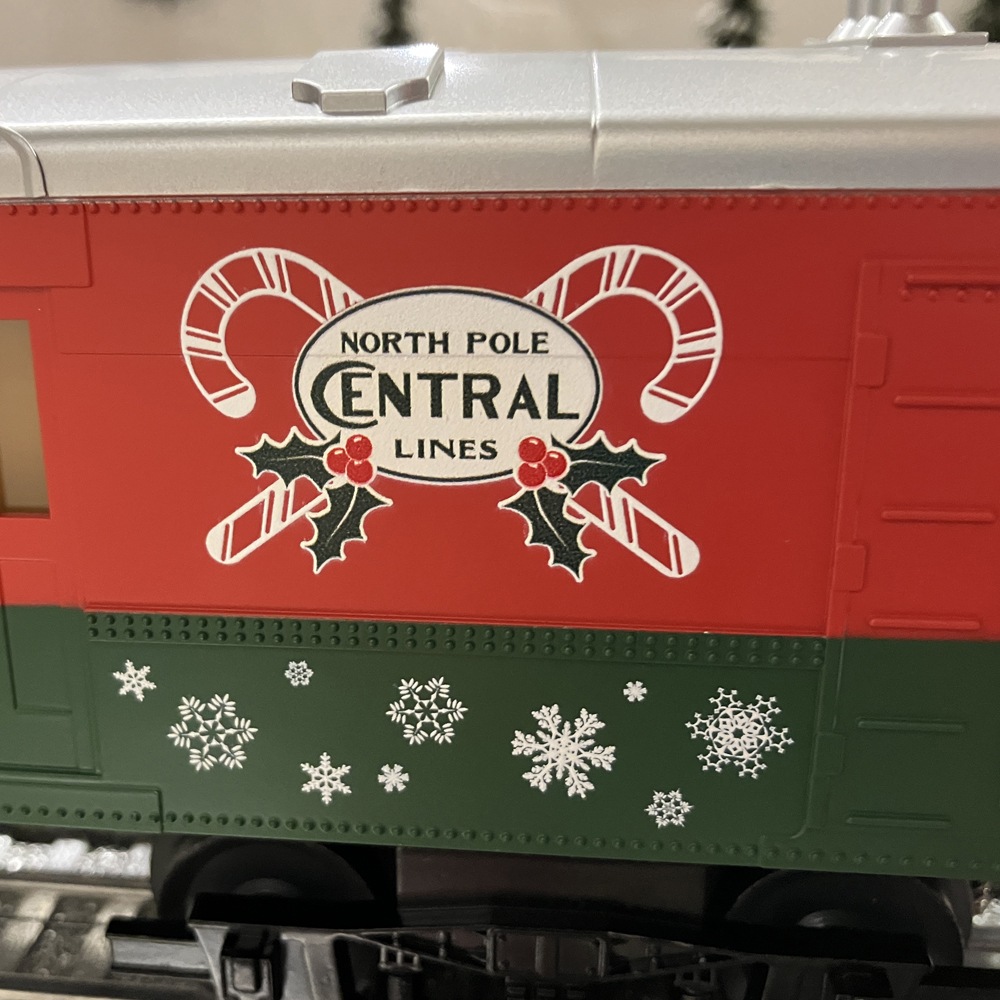
The paint scheme is nicely done in silver, red, and green. I found one small uneven spot in the zebra-striped paint near the front of the engine, but it’s barely noticeable, especially once it’s on the track. An interesting side note: in my research I discovered that both Boston & Maine (No. 1180) and Minneapolis & St. Louis (GE-29) both had similar zebra stripe patterns on the front of their doodlebugs.
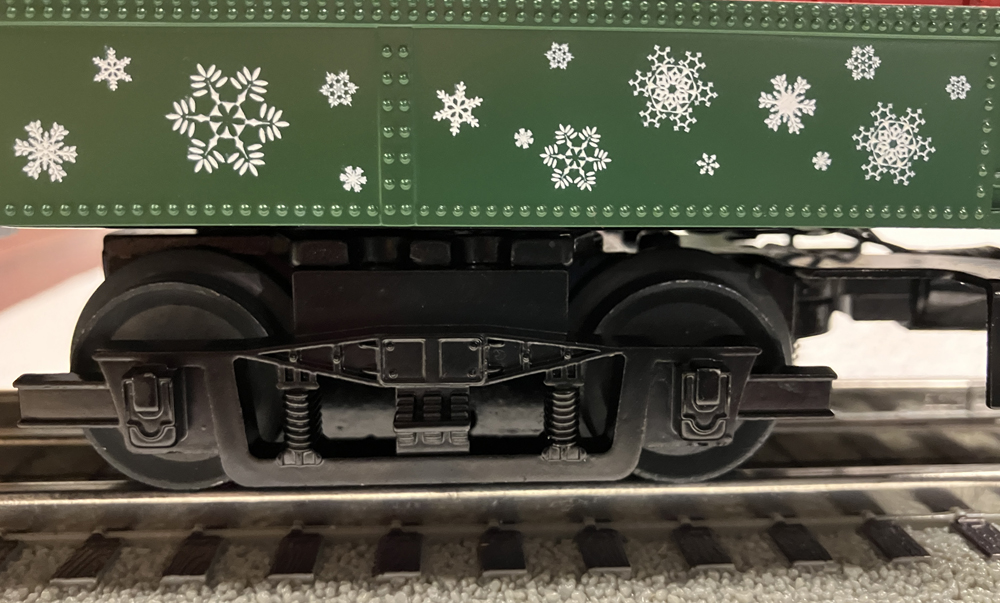
On the underside of the model are three switches. Run/Program, where run is for usual operations. Program will allow you to assign a locomotive ID number in Command Control operation. It can also lock your engine in one direction or neutral during conventional operation. You can turn the smoke on and off, and/or switch the Bluetooth on or off.
On the track
I used a mix of modern and conventional products to test the doodlebug. First, I downloaded the LionChief app on my iPhone. Make sure you switch on the Bluetooth option underneath the railcar and allow the app to access the Bluetooth feature on your phone. The app should discover the model quickly, but if it doesn’t, try removing the railcar from the track for a moment and putting it back.
I turned up an MTH Z-4000 to 18 volts and moved the throttle on my phone. The engine responded quickly and was soon trundling around our City Terminal & Transfer layout. There were no issues negotiating curves or switches (all Lionel FasTrack).
There are fun sound effects like jingle bells (instead of a regular bell) and crew chatter that sounds like that jolly man in a red suit. There’s also a horn.
Smoke soon came out of all three rooftop stacks. Since I didn’t want to set off the company fire alarms, I quickly turned off the smoke unit.
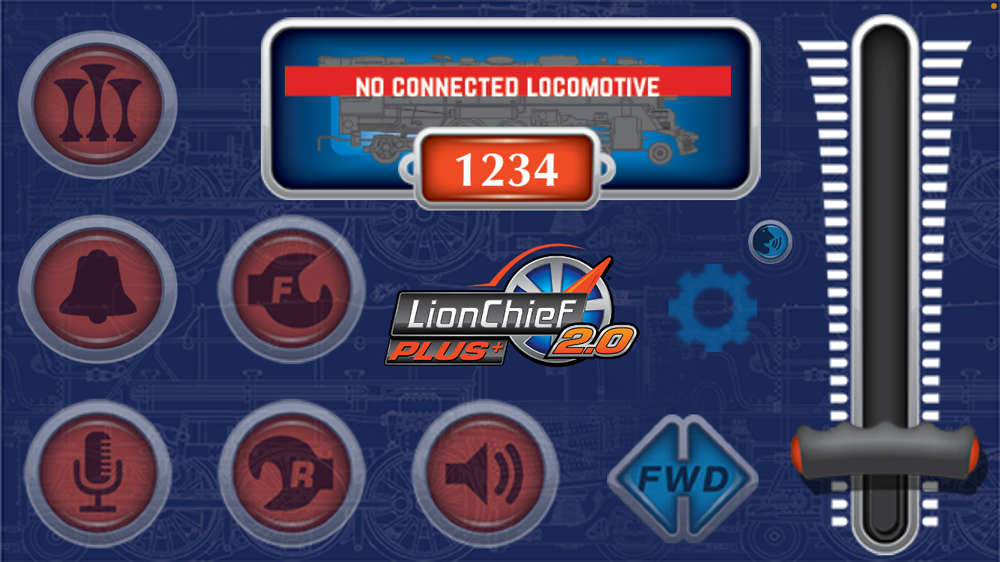
This model is equipped with Lionel Voice Control (LVC). To access LVC, click on the small blue speaking person icon near the blue gear in the app. An orange box appears in the middle of the screen. If you haven’t used LVC before, you can say “help,” and a list of suggested commands appears on the screen.
After you speak, you’ll see the word(s) inside the orange box, and the engine will respond. Make sure the volume on your phone is turned up and speak clearly. While I enjoyed using the app, I have to say that LVC sure made me smile. I never imagined you could control a toy train with your voice!
This model has two ElectroCouplers, which you can open via the app. Click on the coupler shape in the app; you’ll hear an uncoupling sound, and see the coupler open. Pretty neat.
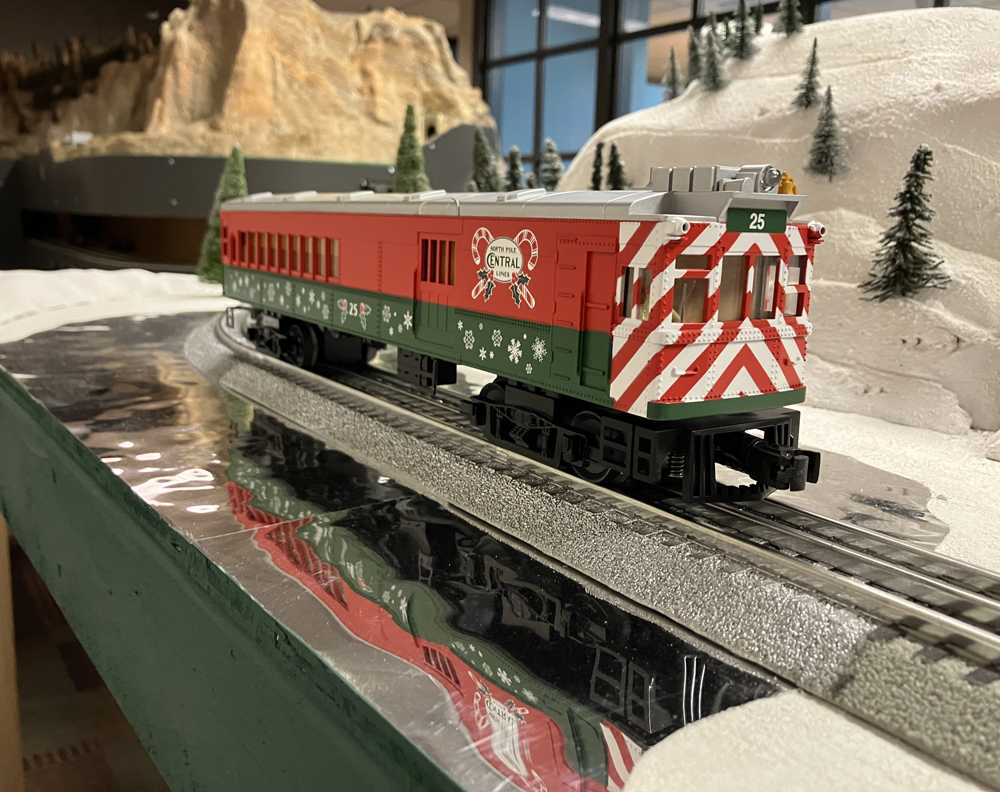
Since the doodlebug was generally meant to run solo, or maybe with one car, I added one Lionel Santa Fe passenger car on the rear. It ran without any problems.
I also tested this model conventionally using a Lionel ZW-L and ZW transformers. Make sure to turn off the Bluetooth option on the model first. The railcar worked great using the ZW-L, with the lights turning on around 7 volts and movement starting at 11 volts. The response using the ZW was a little sluggish, about a one or two second delay after increasing the throttle, but overall it still worked fine and the railcar ran without issues. After talking with my husband (a longtime hobbyist), it’s highly possible our ZW needs servicing and it’s the reason for the delay. I’ll be taking it to a hobby shop soon for troubleshooting.
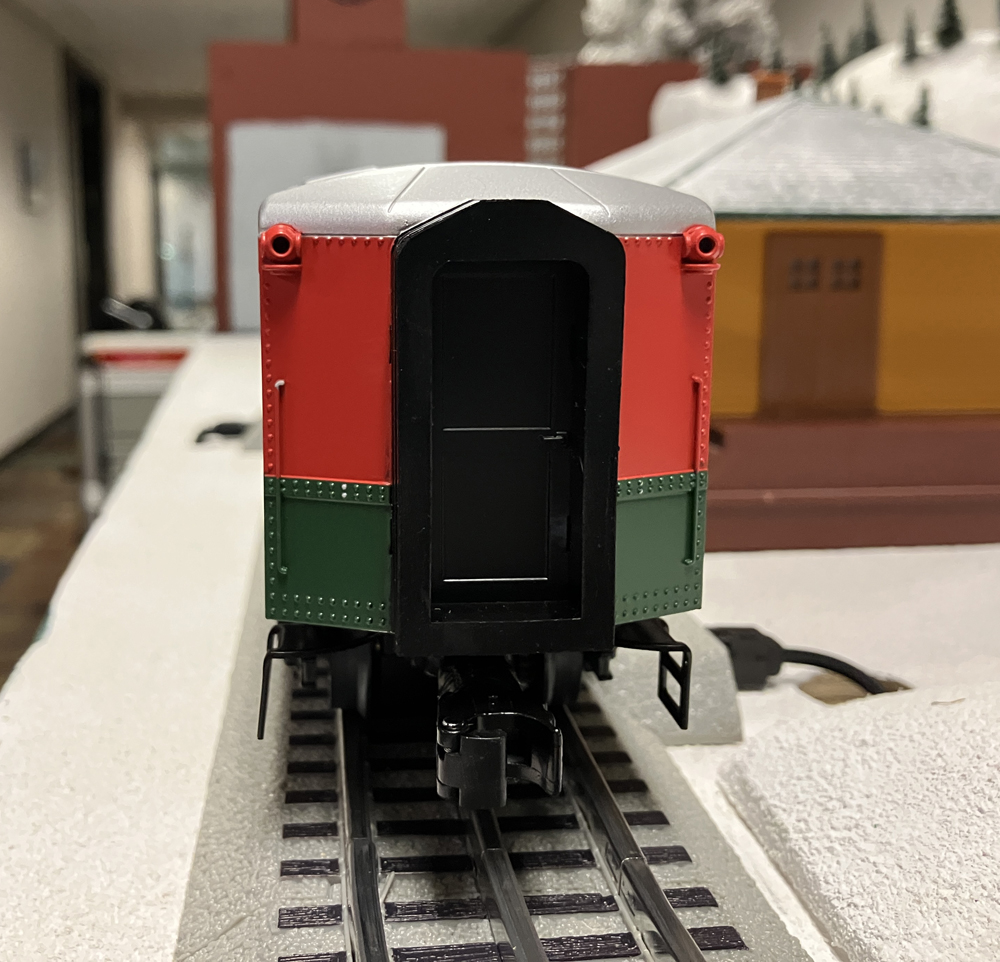
This is a fun model. The Christmas paint scheme would make an eye-catching item at an open house or a holiday event. If you’re looking for a smaller, unique item for your layout, the doodlebug should be on your roster.
Lionel doodlebug
MSRP: $399.99
Features: TMCC, Bluetooth, or conventional control; equipped with LionChief Plus 2.0 technology; Lionel Voice Control; O-31 operation; dual ElectroCouplers; fan-driven smoke unit; directional headlights; marker lights; engineer in cab
Road names: Hallow’s Eve (2235080); North Pole Central (2235090); Maryland & Pennsylvania (2235070); Pennsylvania (2235060); Santa Fe (2235040); Union Pacific (2235050)
Website: Lionel.com













